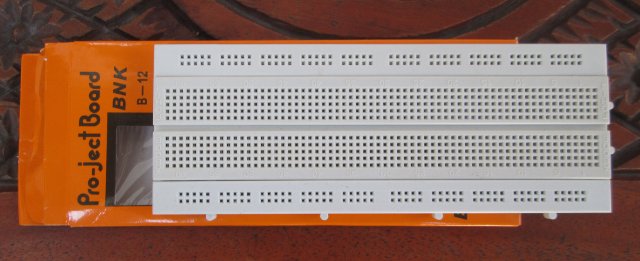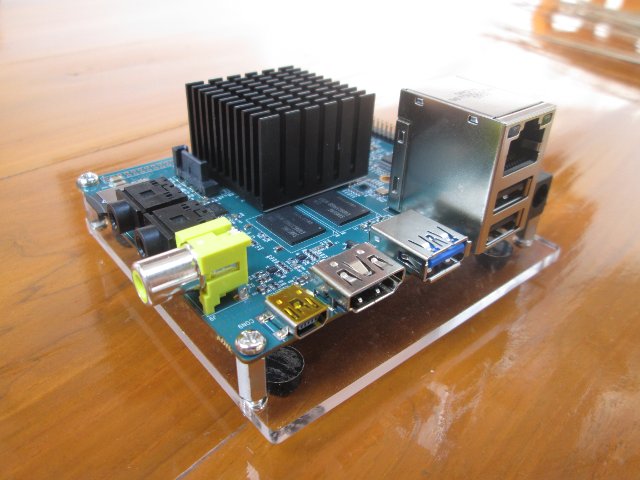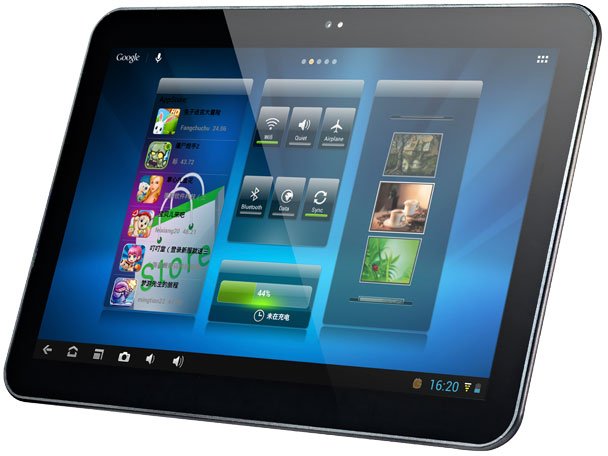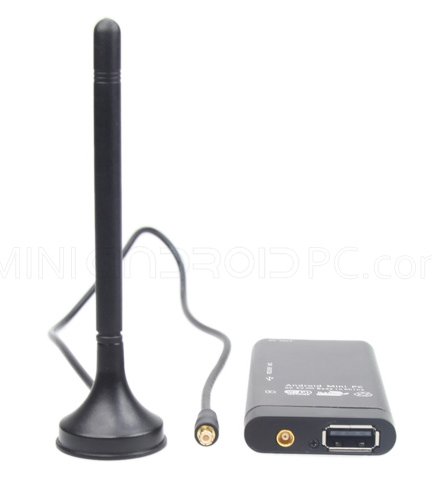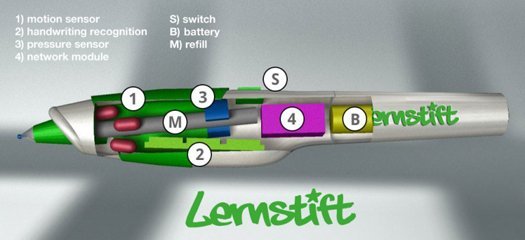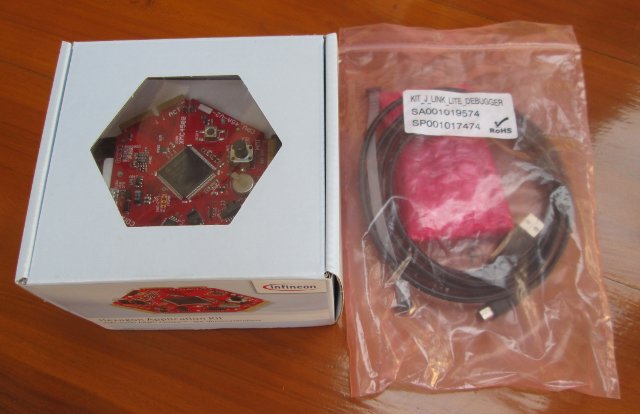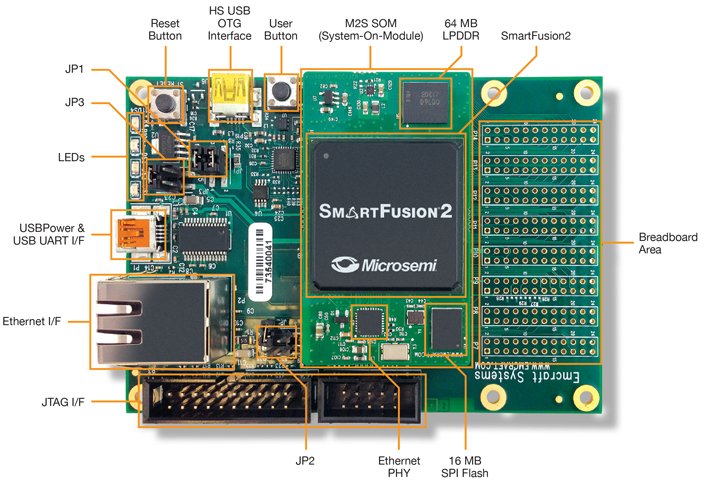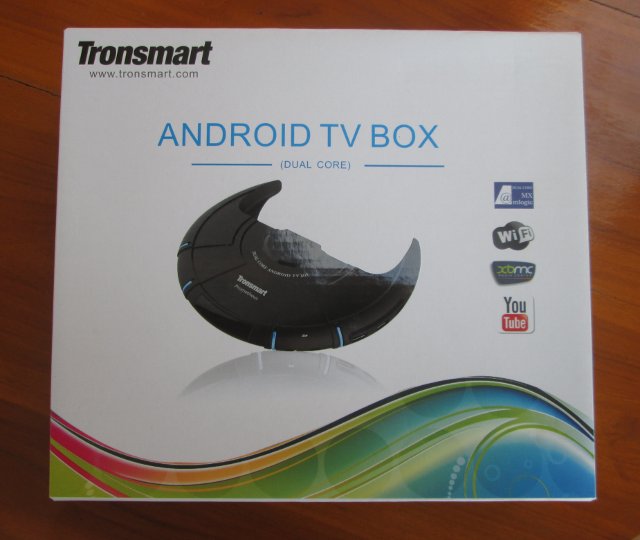Since I was in urgent need for a 5V/3A power adapter, I decided to go shopping locally (in Chiang Mai, Thailand) at some computer shopping malls, where they also have some spare parts. We spent about 1h30 visiting around 10 shops with no success: most of them did not have 5V power supply for sale, and those who did, could only provide 5V/2A power adapters. Finally, one guy at a shop was very helpful, and tried to help us without success, but finally he said you should go to “Amorn“, and after driving a few kilometers we got there. When I entered the shop I started to see some pretty interesting equipments: multi-meters, full sized oscilloscopes from 11,000 Bath (~370 USD), electronics cards for appliances (ventilators washing machine, car audio, amplifiers…), soldering irons, ribbon cables, components (capacitors, but no resistors), and much more. It turns out “Amorn Electronics Center” has […]
ARMBRIX Zero Cortex A15 Development Board Unboxing Pictures
I’ve just received an early sample of ARMBRIX Zero (aka ARMBRIX-5250-A), a development board based on Samsung Exynos 5250 dual cortex A15 processor with 2GB RAM, a microSD slot, 1x USB 3.0, 2x USB 2.0 Host, 1x USB Device, 10/100 Ethernet, HDMI output, SATA 3.0, some Audio I/O ports, and 3 expansions headers. This is basically a low cost version of the Arndale board, with things such as eMMC 4.5 (Sorry I’ve missed the eMMC socket at the back of the board) sensors missing. Today, I won’t turn the board on (I’ll explain why at the end of the post), but instead show some pictures of the development and debug boards. If you had previously seen the board picture before, you’ll noticed it has a grown a heatsink. The heatsink is probably here to stay, but may be slightly different (e.g. lower) when you receive your board. The bottom acrylic […]
Pipo Max M9 Android 4.1 Tablet Powered by Rockchip RK3188
I first heard about Rockchip RK3188 quad core Cortex A9 at the end of 2012, Rockchip showcased an RK3188 tablet development platform at CES 2013, and we were told the first tablet would ship in March without more details about available models. It appears Pipo Max M9 may be one of the first RK3188 available for purchase. This Android 4.1 tablet features a 10″ IPS display with 1280 x 800 resolution, 2 GB RAM, and 16 GB Flash. Here are the full specifications for PiPO MAX M9: SoC – Rockchip RK3188 Quad core Cortex A9 @ 1.8GHz with Mali-400MP4 GPU @ 533 MHz. System Memory – 2 GB RAM Storage – 16 GB flash + microSD slot Display – 10.1″ IPS display with 10-Point capacitive touch screen. Resolution: 1280 x 800 pixels Connectivity: Wi-Fi 802.11 b/g/n Bluetooth 2.1 3G via external USB dongle Camera – 2.0MP front camera, 5.0MP rear […]
MK812 mini PC Comes with 1GB RAM, a Webcam and an External Wi-Fi Antenna
Here’s yet another mini PC based on Rockchip RK3066. MK812 mini PC looks just like Kimdecent B12, but the version version has been updated by replacing one of the microUSB ports with a jack to insert the cable of a high gain 3dB antenna. The antenna has a magnetic base so that you can stick it on your metallic furnitures… They have also increased the amount of RAM, and you now get 2GB RAM in the device. Update: Only 1GB RAM finally. Here are the MK812 specifications as shown on MiniAndroidPC: SoC – Dual-core Allwinner? A9 1.2~1.6GHz CPU processor System Memory – 2 1GB DDR3 Storage – 8GB NAND flash memory + microSD slot Video Output – HDMI (1080p/2160p) Connectivity – Wi-Fi 802.11 b/g/n & Bluetooth 2.3 Camera – Build-in 2MP camera USB – 1x USB 2.0 Host, 1x USB OTG Misc – Build-in microphone, and reset button. Dimensions – 88 […]
Lernstift – Linux Based Learning Digital Pen
Lernstift UG, a German startup, is working on a digital pen, called Lernstift as well, that can help children learning how to write by vibrating in case of errors. The Lernstift can be used in 2 modes: Calligraphy Mode – Pointing out flaws of form and legibility. Orthography Mode – Detecting orthographic (1 vibration) and grammatical (2 vibration) mistakes. Since it features a ballpoint, it can be used as a real pen, you know to write on paper…, but you can also write in the air, so I suppose they’ll also make a version without ballpoint, so that kids can enjoy one of their favorite pastimes: writing on the walls! The pen features a CPU module (2) that’s used to handle handwriting recognition, gather data from the motion (1) and pressure (3) sensors, and manage the Wi-Fi module (4). A battery, a power switch, and a pen refill complete Lernstift […]
Infineon Hexagon Application Kit (XMC4500 Enterprise Edition) Overview and Quick Start Guide
A few months ago, Infineon sent me XMC4500 Relax Lite Kit for review, and I wrote a short Getting Started Guide about this 10 Euros Cortex M4 devkit. This month, I’ve received another XMC4500 kit with more features and expansion abilities: XMC4500 Enterprise Edition which is one of their Hexagon Application Kit. I received two packages: CPU Board XMC4500 General Purpose (CPU_45A-V2) with accessories (55 Euros) – This is what you get when you order to Basic Kit. J-Link Lite Cortex-M Debugger (40 Euros) Let’s open the packages and see what’s inside. In the first package, we’ve got XMC4500 CPU board, a pin extension board that can be used on any of the 3 extension connectors of the CPU board to access the signals easily, and a microUSB to USB cable for power. The JLink debugger comes with a 10-pin ribbon cable, and a microUSB to USB cable to connect to the […]
$299 Microsemi SmartFusion2 Starter Kit (Cortex M3 + FPGA)
Microsemi SmartFusion2 SoC family combines an ARM Cortex-M3 Core @ 166 Mhz and FPGA Fabric with up to 12M Gates, and comes with up to 512 KB eNVM and 64 KB eSRAM, 1 CAN A & B interface, 1 GbE port, 1 USB 2.0 OTG, and diverse serial interface. Last year I received Emcraft SmartFusion Starter Kit using the first generation of the starter kit, and Microsemi (previously known as Actel) and Emcraft Systems have recently announced the second generation with the SmartFusion2 Starter Kit. The main hardware features include: SmartFusion2 SoC FPGA in FG896 package (M2S050T-FG896ES) with 256KB eNVM, 64KB SRAM, and 48,672 logic modules. JTAG interface for programming of the SmartFusion2 device 10/100 Ethernet interface and RJ-45 connector USB OTG interface and mini-USB connector USB based Wi-Fi Module 64MB LPDDR, 16MB SPI flash User push-button connected to GPIO on the SOM Two user-controlled LEDs connected to GPIO on […]
Tronsmart Prometheus Review
Now is the time to review another device sent to me by Geekbuying. Tronsmart Promotheus is an Android 4.1 Android set-top box powered by AMLogic AML8726-MX (aka AML8726-M6) with 1GB RAM and 4GB Flash, 3 USB ports, as well as Wi-Fi and Ethernet for connectivity. This device, which looks like a spaceship (my wife said it looks like a buffalo), has the potential to run XBMC with full hardware acceleration in Android and/or Linux. Tronsmart Prometheus Unboxing I’ve received the box in the package below. Apart from Promotheus media player, the package contains a 12V/1A power supply, an HDMI cable, an AV cable and a user manual in English that appears to be useful for once. It explains how to connect to device to the TV, to the networks, and to the power, how to do firmware upgrade, and how to troubleshoot it. It is presented in a way that […]


